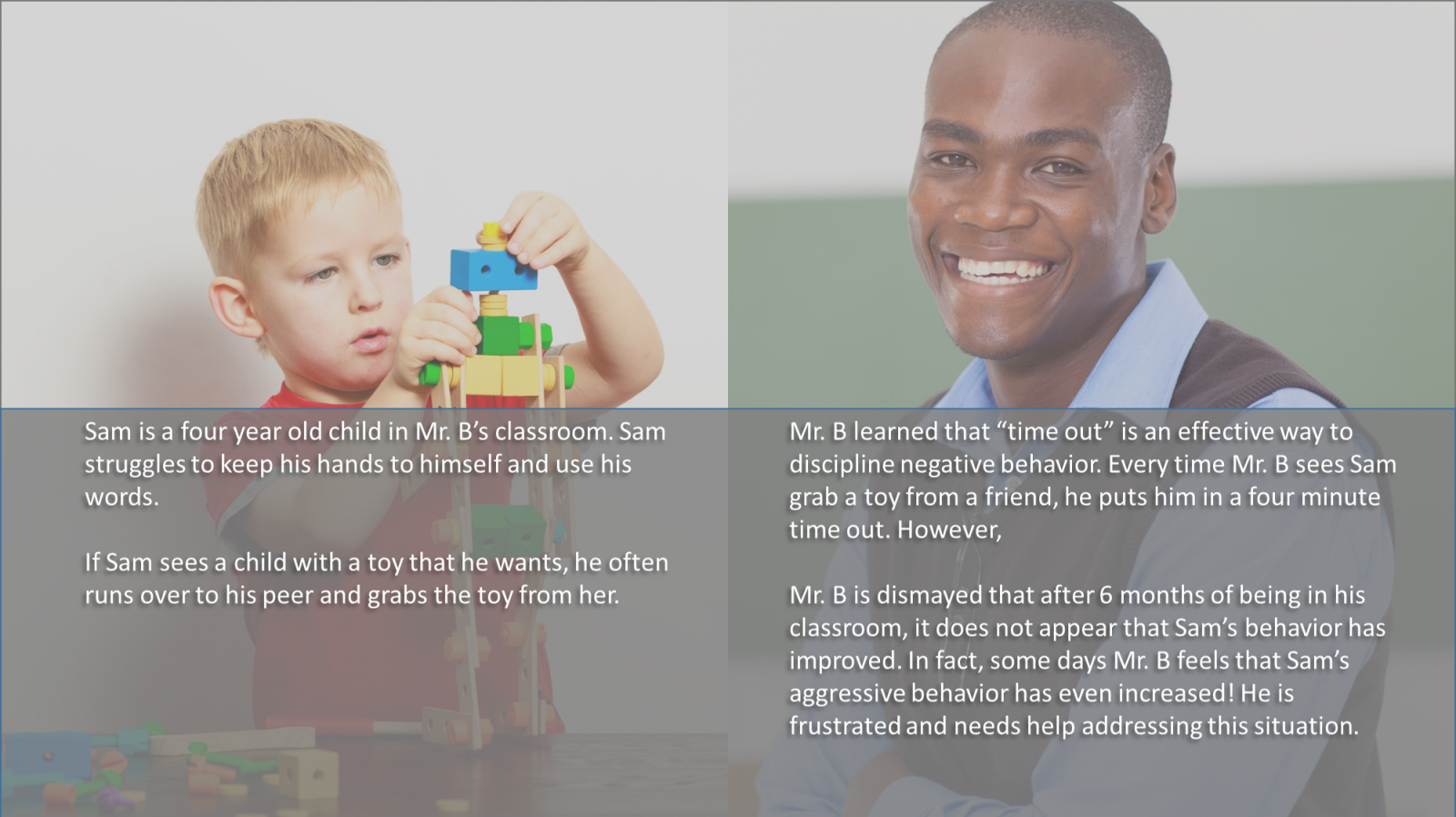03: Forming Positive Relationships
Community
For many of the children we serve, our programs are their first communities outside of their families. This community should provide a physical, emotional, and cognit ive environment that promotes development and learning as well as providing a physically and psychologically safe place to learn and grow. Having a caring community of learners involves ensuring that each member of that community is valued and included. Let’s take a look at an anecdote from a classroom:

Is he developing this skill by being removed from social situations?

No. It is more likely that Sam will develop positive social skills if Mr. B models a different behavior for him. Mr. B could stop Sam when he sees him grab a toy and prompt him through how to use his words to ask nicely for the toy. Maybe that peer will happily share. Maybe the peer does not want to share, and then Mr. B can help Sam wait his turn or redirect him to another activity. By keeping Sam included in the social situation, Mr. B can model and prompt Sam through difficult interactions. Sam will develop skills such as verbal initiation and waiting. In developing these skills, Sam’s success in the classroom will increase and Sam’s self-esteem with grow.








